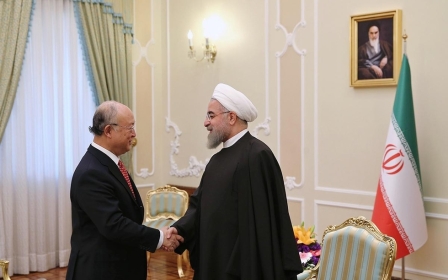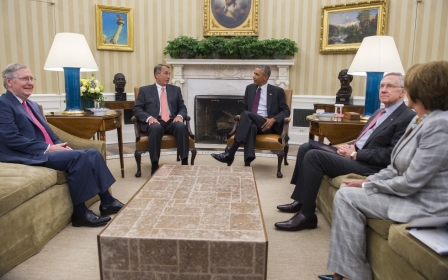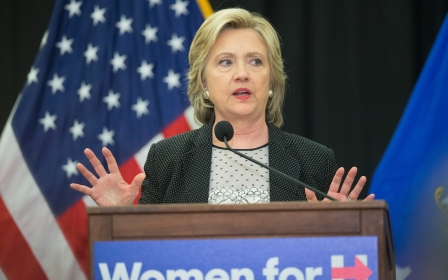Iran's Parchin nuclear myth begins to unravel

For well over three years, heavy doses of propaganda have created a myth about a purported steel cylinder for testing explosives located on a site at Iran’s Parchin military testing reservation. Iran was refusing to allow the International Atomic Energy Agency (IAEA) to inspect the site while it sought to hide its past nuclear weapons-related work, according to that storyline.
Now Iran has agreed to allow the IAEA to visit the site at Parchin and environmental samples have already been collected at the site. However, the politically charged tale of the bomb test chamber of Parchin is beginning to unravel. IAEA director general Yukiya Amano entered the building in which the explosives chamber had supposedly been located on Monday and announced afterward that he found “no equipment” in the building.
That is surely a major story, in light of how much has been made of the alleged presence of the chamber at that location. But you may have missed that news, unless you happened to read the story by Jonathan Tirone of Bloomberg Business News, who was the only journalist for a significant news outlet who chose to lead with the story in his coverage of Amano’s Monday visit.
The rest of the news media buried that fact far down in their stories, focusing almost entirely on the fact that the Iranians have been allowed to physically gather environmental samples at the site under the gaze of IAEA technicians rather than IAEA inspectors carrying out that function.
The main storyline associated with the purported bomb cylinder since early 2012 has been that Iran has been removing evidence from the site for years in anticipation of an eventual IAEA inspection in order to hide the evidence of past experiments using the purported chamber. But the full story of that mysterious chamber makes it clear that it was highly dubious from the start.
The first description of an explosive chamber at Parchin appeared in an IAEA report published in early November 2011. But less than two weeks after the story of the cylinder was reported in the media, Associated Press reporter George Jahn published a report that an official of an unidentified state had “cited intelligence from his home country, saying it appears that Iran is trying to cover its tracks by sanitising the site and removing any evidence of nuclear research and development".
The official provided an “intelligence summary” from which Jahn quoted: “Freight trucks, special haulage vehicles and cranes were seen entering and leaving” the site on 4-5 November 2011, it said, and “some equipment and dangerous materials were removed from the site".
Disputed intelligence
The purpose of that language was clearly to suggest that Iran had actually removed the cylinder and the nuclear materials that it had been testing. If true, it would have been very incriminating evidence of Iran’s nuclear deception. But there was a problem with that claim. Officials of two other IAEA member states that were obviously following the aerial photography of the Parchin site closely denied that the story being peddled to Jahn by the unnamed state was true.
It was true that there was more activity than normal at the site on those days, they told Jahn, but nothing resembling the activities claimed by the unidentified state’s “intelligence summary”. One of those two countries denying the story was clearly the United States. Pentagon spokesman Captain John Kirby told Jahn he had “seen nothing to indicate that those concerns are warranted”.
The episode of the AP story begs the obvious question: Why was the state that could not be named so intent on planting a false story of Iranian removal of the purported cylinder? The obvious purpose of such a story would be to prepare government and public opinion for a possible IAEA visit to the site in the future, and the subsequent discovery that there was nothing incriminating at the site.
That, in turn, indicates that the state in question was the same one that had provided the original story of the explosive cylinder to the IAEA and that it already knew that no cylinder would be found there because the original story had been a fabrication.
Israeli-supplied documents
The IAEA member state that had provided the information about a purported bomb cylinder was never identified by the IAEA. But IAEA director-general Mohamed El Baradei asserts in his memoirs that in the summer of 2009 Israel turned over to the IAEA a number of intelligence documents purporting to show that Iran had carried out nuclear weapons work “until at least 2007,” most of which consisted of purported Iranian official documents whose authenticity had been questioned by some of the agency’s technical experts.
El Baradei refused to bow to diplomatic pressures from Israel’s allies, coordinated by the head of Israel’s Atomic Energy Commission, to publish a compendium of those documents, including the claim in an intelligence report of the Parchin explosives cylinder. The Israelis and the Obama administration had to wait until Amano succeeded him and agreed to do exactly that.
The episode of the AP story isn’t the only evidence that the unidentified state had concocted an intelligence document on Parchin that was a complete falsehood. In August 2012, an IAEA report stated that the agency had acquired the satellite imagery available on the Parchin site for the entire period from February 2005 to January 2012. The report revealed that the imagery showed “virtually no activity at or near the building housing the containment vessel” during that entire period. The imagery clearly suggested that Iran had not been using the site for any sensitive activities, much less the activities suggested by the IAEA in its report, during the seven years, nor had they engaged in any cleanup of the site.
And an earlier episode sheds further light on the issue. In 2004, John Bolton, then the administration’s Iran policymaker, leaked satellite imagery of sites at Parchin that had features someone believed might be high explosives testing facilities. After a few months of bullying by Bolton, the IAEA asked to visit Parchin. Iran not only agreed to an inspection in February 2005 but allowed the IAEA to choose any five sites in any one of the four Parchin quadrants – after the inspection team’s arrival - and take environmental samples anywhere at the sites. And in November 2005, after El Baradei requested a second inspection, Iran again gave the IAEA the choice of five more sites at which to take samples.
The significance of those two 2005 IAEA inspections is not merely that the environmental samples all came back negative. More important, Iran would never have allowed the IAEA to choose to take environmental samples anywhere it chose at Parchin if it had carried out nuclear-weapons related experiments as claimed later by the unidentified state.
The story continues
Beginning in spring 2012 and continuing right up to the Vienna round of Iran nuclear negotiations last summer, the IAEA, Western diplomats and David Albright of the Institute for Science and International Security generated many dozens of stories about Iran’s “stonewalling” the IAEA on Parchin while it sought to remove evidence of its purported nuclear-related testing at the site. Those stories invariably used the term “sanitising” – the same word the Israeli official used in passing on the false story to AP.
Those stories were just as dishonest as the original Israeli story because the IAEA and Western diplomats assigned to it know very well that there is no way to remove all traces of nuclear material from a site. In 2013, Stephan Vogt, the head of the IAEA's environmental sample laboratory, declared in an interview: "You cannot get rid of them by cleaning, you cannot dilute them to the extent that we will not be able to pick them up." Strangely, however, even after that interview was published, the Parchin stories continued as if Vogt had not revealed the impossibility of “sanitising” a site that had held nuclear material.
We are now only a few weeks away from the release of the environmental sampling results at Parchin. It will be amusing to this writer to see how the governments and news media who pushed the Parchin myth manage that story.
- Gareth Porter is an independent investigative journalist and winner of the 2012 Gellhorn Prize for journalism. He is the author of the newly published Manufactured Crisis: The Untold Story of the Iran Nuclear Scare.
The views expressed in this article belong to the author and do not necessarily reflect the editorial policy of Middle East Eye.
Photo: This handout picture taken on August 13, 2004 provided by DigitalGlobe satellite and courtesy of the Institute for Science and International Security, shows a view of facilities of Parchin military site in Iran which was alleged to be possibly involved in nuclear weapons research. (AA)
New MEE newsletter: Jerusalem Dispatch
Sign up to get the latest insights and analysis on Israel-Palestine, alongside Turkey Unpacked and other MEE newsletters
Middle East Eye delivers independent and unrivalled coverage and analysis of the Middle East, North Africa and beyond. To learn more about republishing this content and the associated fees, please fill out this form. More about MEE can be found here.





